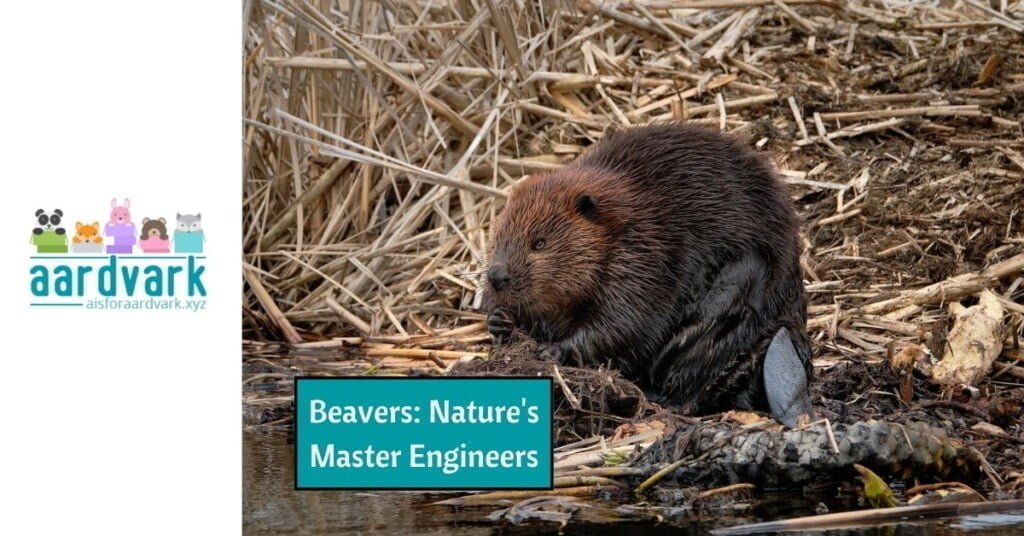Beavers are nature’s engineers, renowned for their ability to dramatically transform landscapes. These industrious animals belong to the genus Castor and are divided into two species: the North American beaver (Castor canadensis) and the Eurasian beaver (Castor fiber). Both species share a remarkable aptitude for building dams and lodges, showcasing an innate skill that benefits the ecosystems they inhabit.
Taxonomy and Species
The beaver is classified under the family Castoridae, which includes the two existing beaver species: the North American beaver and the Eurasian beaver. While they are similar in appearance and behavior, distinct differences in their physical characteristics and habitats have led to their classification as separate species.
The North American beaver is typically larger and has been instrumental in shaping North America’s landscapes. Having faced near extinction, the Eurasian beaver is now the focus of numerous successful reintroduction projects across Europe and parts of Asia.
Physical Characteristics
Beavers are most notable for their large incisors, which continuously grow throughout their lives and are used to cut trees and vegetation. These teeth are strengthened by iron-rich enamel, which gives them their distinctive orange color and incredible durability.
Another iconic feature is their flat, paddle-shaped tail, which is used for balance when carrying materials and as a rudder in water.
Additionally, beavers have webbed hind feet that aid their swimming prowess, and their dense fur provides insulation against cold waters.
Beavers are among the largest rodents. North American beavers typically weigh between 24 and 71 pounds and reach lengths up to 4 feet, including their tails. Eurasian beavers are slightly smaller on average.
Despite these size differences, both species exhibit remarkable adaptations for their aquatic lifestyles. The main distinction lies in their preferred habitat and some physical characteristics, such as tail shape and fur texture, reflecting their adaptation to different environments across North America and Eurasia.
Habitat and Environmental Impact
Beavers are found in various freshwater habitats, including rivers, streams, ponds, and lakes. They prefer areas with abundant trees like willows, aspens, and maples, which provide food and building materials.
By constructing dams, beavers create ponds that slow water flow, reduce erosion, and increase biodiversity. These ponds serve as vital habitats for numerous species, from fish and amphibians to birds and insects, making beavers keystone species in their ecosystems.
Beavers build dams primarily using branches, mud, and stones. These structures can vary greatly in size, from just a few feet to impressive constructions over 1,000 feet long. These dams serve multiple purposes, including creating deep, still water to protect against predators and provide access to their food sources during winter.
Beaver lodges, constructed from materials similar to their dams, are typically built in the water bodies formed by the dams. Lodges can be quite large, accommodating entire beaver families, with sizes often reaching over 10 feet in height and width. Located strategically for protection, the entrance to these lodges is underwater, making it difficult for predators to access. At the same time, the living quarters remain dry and insulated above the waterline. This careful construction reflects the beavers’ remarkable ability to engineer their environment to suit their needs, providing a safe and stable home for their colonies.
Diet and Foraging Habits
Beavers are herbivores whose diet changes seasonally. They consume various aquatic plants, leaves, and herbaceous vegetation in spring and summer. As winter approaches, beavers shift their focus to the bark, twigs, and leaves of deciduous trees, storing food in underwater caches near their lodges. This foraging behavior not only sustains the beaver family through the cold months but also plays a crucial role in the ecological dynamics of their habitats, promoting the growth of young forest stands and increasing plant diversity.
Social Structure and Behavior
Beavers are highly social creatures that live in family groups called colonies. These colonies typically consist of the breeding pair, the current year’s offspring, and juveniles from the previous year. Beavers exhibit remarkable cooperation within these family units, working together to maintain and defend their lodges and dams. Territorial by nature, they use scent markings to communicate and establish boundaries, showcasing complex social behaviors that ensure the survival and growth of their colonies.
Reproduction and Lifespan
Beaver families are the heart of their social structure. A breeding pair mates for life, demonstrating a strong bond. Breeding occurs in late winter, and after a gestation period of about 105 days, females give birth to one to four kits. These kits are born fully furred and with open eyes. They’re able to swim within 24 hours!
In the wild, beavers can live up to 10-15 years, with their survival rates heavily influenced by environmental conditions, predation, and human activity.
Conservation Status and Human Impact
Historically, beaver populations suffered significant declines due to fur trade, habitat loss, and human encroachment. However, through various conservation efforts, including legal protection and habitat restoration, beaver populations have begun to rebound in many areas. Despite this positive trend, beavers still face challenges such as climate change and continued habitat fragmentation, making ongoing conservation efforts critical for their future.
Beavers and Biodiversity
Beavers’ environmental impact extends far beyond their immediate surroundings. Their dams help create wetlands, which provide habitats for a myriad of species and enhance local biodiversity. These wetlands serve as crucial breeding grounds for many amphibians, a habitat for birds, and a source of water during dry periods, proving the indispensable role beavers play in ecosystem health and resilience.
Beavers in Literature, Cultures, and Pop Culture
Beavers are prominent in folklore, symbolizing industriousness and teamwork across various cultures. In literature and pop culture, they are often portrayed as hardworking and clever, featured in children’s books, cartoons, and as mascots. This cultural representation underscores a deep-rooted respect and admiration for these creatures, reflecting their importance not just ecologically but also in human society.
Through their natural behaviors and engineering skills, Beavers play a vital role in shaping ecosystems, promoting biodiversity, and maintaining healthy waterways. Their ability to transform landscapes exemplifies nature’s interconnectedness, reminding us of the importance of conservation efforts to protect these keystone species. As we continue to learn from and about beavers, it becomes clear that their presence is crucial for their survival and the health of the planet as a whole.


